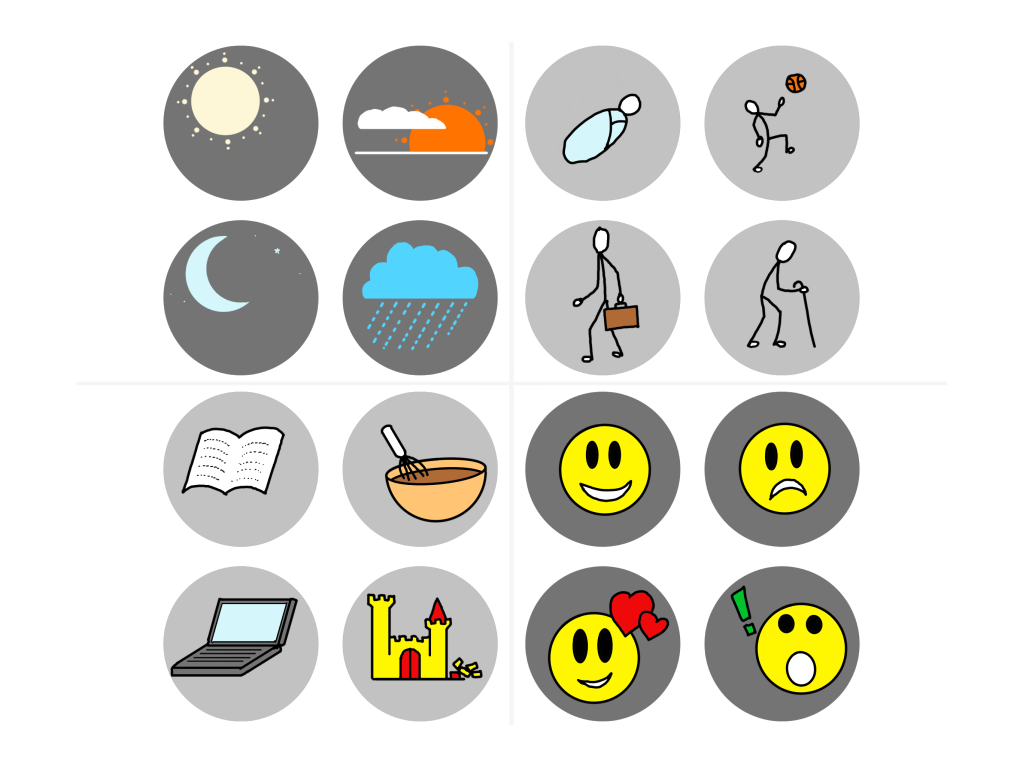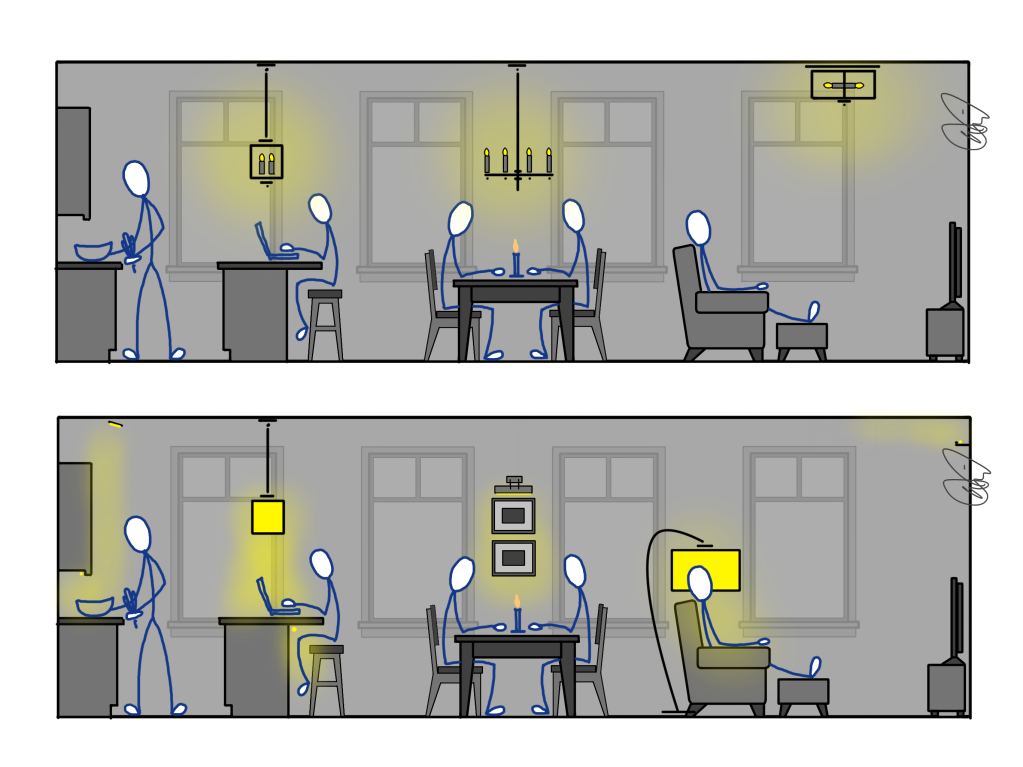I have always been me, yet everything about me- and around me- has changed. This is true of every human on the planet, in every nation: we are always changing.
Some of these changes are inevitable: none of us can avoid growing older and encountering the changes that come with aging. Other changes are those we bring upon ourselves, like changing fashions or moving to new locations. Some changes are literal forces of nature, like sunrises and thunderstorms, while others are forces of society, like leaving home for school or work.
There is a reason why “the only constant is change” is a much-used cliché. It is true. I have always been me, yet every cell in my body is replaced by new cells, every electrical impulse in my brain replaced by the next one.
Unfortunately, for most of us, the light we live under never changes. And, as we are only now beginning to understand, this is not good for us.
In a previous post in this series, I looked specifically at how light can help us feel our best, and light that helps us change easily is a related construct. I previously argued that living under the exact same light all the time is a little bit like eating apples, and only apples, and suffering the results of an unbalanced diet.
Light for change goes beyond light for feeling good. While a diet of only apples is not good for us, a life filled exclusively with eating healthy foods, all day, every day, is not good either. We need exercise, companionship, learning, work, and other activities to make a full, healthy, happy life. Light, then, must not only be the right light, but also the right light at the right time, and that requires constant change.
In short, it is time to retire the light switch.

Let’s look at just four categories of change that light can help us handle with greater ease: natural light, age, activity, and mood. There are many, many other ways we change, some of which I mentioned above, but to describe all the ways we change over our lifetimes would require something more like an encyclopedia than a blog post. And yes, I realize that using the term encyclopedia probably dates me.
NATURAL LIGHT
It is a dark, rainy autumn day as I write this post, and the sun’s light is caught in a thick cover of clouds. Outside my window, the light that does make it down to the ground is bouncing off trees and shrubs that are bursting with fall color. There is a kind of melancholy beauty to my view. It will get dark early today, with the shortening days as we head towards winter solstice and the clouds bring nightfall even earlier.
And tomorrow, natural light in my office will be different. Our bodies are built to absorb the enormous spectrum of light delivered in nature and to adapt to the changes brought by the rise and fall of the sun. Our irises open and close to adapt to a staggering spread of brightness levels. Our retina’s are packed with different kinds of cells for seeing during the day and for seeing at night.
Imagine a world without natural light. There would be no rising sun to help get us going in the morning. There would be no sunny days for walking the dog, no beautiful sunsets, no gradual darkening to prepare us for rest, no moon, no stars.
That scary world is the one we inhabit when we live, work, and play indoors under unchanging light.
AGE
I am in my very late forties, at least at the time of writing this post. There are a lot of advantages to being this age, like having a little bit of unearned respect that is not given to a teenager. I like that I can stay up as late as I want, which happens to be about 9pm. There are certain aspects of aging, however, that are not much fun.
I won’t get into the little physical ailments that, instead of disappearing after a few hours, seem to hang on through months of physical therapy. And I don’t need to complain about my eyesight too much, because the transition lenses in my eyeglasses do a rather decent job of compensating.
But I have noticed that my eyes, like most of my body, are slowing down a bit. The muscles and components of the eye that move constantly, all day long, take a little longer to react. If I leave a bright living room and a good book to walk the dog in the last light of day, my eyes no longer instantly adapt to the changes. It takes a little longer.
I have also read that the natural lenses in our eyes yellow with age, like a piece of clear plastic that has been hanging on too long. This will eventually shift my perception of color temperature, or the warmness/coolness of light.
Imagine a world where there is only one level of light, a constant brightness that must work equally well for an infant, a teen, a middle-aged person, and an elder. That is how we live when we limit ourselves to “off” and “on” in our homes.
ACTIVITY
By now you have probably caught my drift. Artificial light that does not change ignores the fact that our lives are in constant change, that our bodies are built to experience constant change. This can be applied to nearly every aspect of our lives, and activity is no different. Do we need the same light for reading a book as running on a treadmill or giving a presentation at work or enjoying dinner with friends?
Imagine a world where your every minute was spent in a big box store like Walmart. You’re never allowed to leave, never allowed to visit a comfortable restaurant or relaxing home. You must work in Walmart, get married in Walmart, sleep in Walmart, exercise in Walmart, celebrate holidays in Walmart, play with your children in Walmart. It sounds like a miserable experience, but the unchanging light that makes it easy to for Walmart to stay open 24/7 is remarkably similar to the light many of us have over our heads at work and at home.
MOOD
There seems to be a running theme in this post, unintentionally: I am getting older. So it is with that in mind that I confess I am often surprised at the emoji’s I receive from others in text messages. Oh, how cute, I did not know that was an emoji.
Now imagine someone who loves using emoji’s limited only to .
Our moods change, sometimes imperceptibly, other times dramatically, and those changes can happen multiple times a day. If we want to support our lives in different moods, light can help us. Excitement? We can do that with light; it gets done in nearly every popular musician’s concert. Relax? Sure, how about a crackling fire and some candlelight. Sad? Cozy up to warm, soft light. Angry? I suppose bright flashing lights would keep you that way, but certain soft colors can have a much-needed calming effect.

The top panel of the image above is a simple illustration of the kind of light we have in the typical home. There are fixtures attached in some form to the ceiling, most with unshaded bare light bulbs. The light is more or less the same for every activity, every mood, every age, every weather.
The lower panel begins to hint at something else: different lights at different times for different reasons. Strong light on the countertops is great for cooking, but soft light over the island might be better for catching up on email. The dining area, used in this image for a romantic meal, is lit by candle and supplemented with art lighting. And the relaxing individual in the living area can read by lamp or move around by indirect light.
I could not figure out how to communicate, in a single static sketch, actual change. Perhaps I could make little video, a GIF, that shows the kitchen lights going off for dinner and coming back on, but much lower, for an after-dinner drink. Maybe I could illustrate the kitchen island with changing light for daytime cooking and evening relaxing. Maybe I could show multiple layers of light in the dining area being used to create a quiet dinner or a rowdy atmosphere for board games. Lights in the living room could click off when the book is put down, perhaps dimming gently towards bedtime to prevent melatonin suppression. If you have an idea on how to illustrate the necessity of changing light, let me know.
We are built for changing light; it is a key component of the human experience and our own wellbeing. Our homes, however, are built to stay the same, day and night, ignoring our needs.
If this is true for you, er, well,… it may be time for a change.
Read more of my Light Can Help Us series HERE.
